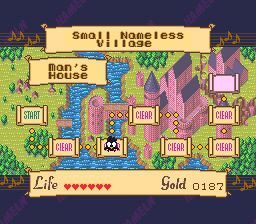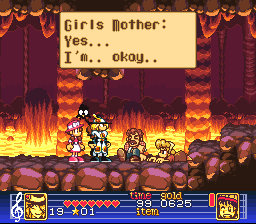 by: Wes
by: Wes
In my review of Playmates Toys's Terminator Salvation T-600 figure, I mentioned that "Terminator: The Sarah Connor Chronicles" is solely responsible for my renewed interest in the franchise. While the show wasn't always perfect -- the Sarah loses her mind "trilogy" of episodes wasn't that great, for instance -- it was mostly quite brilliant and definitely added new layers of depth to the Terminator mythos. I mean, while the idea of a robot sent back from the future in order to eliminate the machines' primary foe before his birth was pretty cool, the first Terminator film was essentially a monster movie with a murderous cyborg as the creature of the week. Terminator 2: Judgment Day was somewhat more interesting in that it introduced a Terminator robot reprogrammed to protect the main characters -- not to mention that the film's more upbeat tone made it more accessible to a wider audience -- but, in typical summer blockbuster fashion, it neither added nor attempted to expand upon the original premise. And Terminator 3: Rise of the Machines was just stupid, so it doesn't count (and it's fitting that TSCC completely ignores it and follows from the events of the second movie).
TSCC, however, goes beyond the films' focus on just one of Skynet's missions: to terminate John Connor before he can lead humanity to victory in the upcoming Human-Machine War. While this remains an important objective for most of the cyborgs that appear on the show -- such that, if they see and recognize John Connor, his assassination will take priority over their other concerns -- most of them were sent back from the future with very different goals in mind. One Terminator came back to impersonate a city worker's husband in order to ensure that she would complete a project to develop a computerized traffic system. Another came back to destroy a power plant that would ultimately become a key strategic hold for the human Resistance. One came back to assassinate the Governor of California but ended up 90 years off course -- and because he accidentally killed the man who would have built the building in which the assassination was scheduled to take place, he started his own building company, purchased the land, and then built the structure himself. And then there was Cameron (played by the delightful Summer Glau), who picked up Arnold's mission as John Connor's protector...except, of course, when her chip got damaged and she flipped out on him.
Ah, but certain Terminators' objectives got even more interesting than that! One advanced model (played by Shirley Manson of Garbage!) took independent action against Skynet not only by foiling its operations where it became aware of them, but also by developing its own artificial intelligence and providing it with a moral guide to teach it to value human life. Heck, even Cromartie, the enemy Terminator that hunted John Connor during the first and second seasons, exhibited a fair amount of independence when it destroyed a fellow T-888 -- which was apparently acting under direct orders from Skynet -- because it believed that the other machine's  target would lead it to the Connors. Moreover, because TSCC featured multiple humans who either came from the future or were integral to future developments, there were lots of flashbacks (or flashforwards, depending upon your point of view) depicting life and events during the post-apocalyptic battles.
target would lead it to the Connors. Moreover, because TSCC featured multiple humans who either came from the future or were integral to future developments, there were lots of flashbacks (or flashforwards, depending upon your point of view) depicting life and events during the post-apocalyptic battles.
But wait, you say... isn't this supposed to be a review of Terminator Salvation? And indeed it is, but since TSCC was the only reason I was at all interested in seeing the fourth movie in the franchise, I feel compelled to talk about what made that show so great in order to better explain why I came very close to hating Salvation. Now, I understand that a two-hour movie can't hope to be as involved or complex as a television show that spans 31 hour-long episodes. I also understand that whereas TSCC was free to ignore the extreme suckfest that was Terminator 3, Salvation had to treat the events in that film as canon. But considering that every single episode of TSCC was more interesting than that movie, I do not understand why it had to lack compelling and believable characters, a good story, and all but the tiniest Coltan shard of depth.
For starters, the movie takes place during what is probably the most boring period in the Terminator timeline. Even though they lacked the deeper intrigue of TSCC, the previous movies included time travel -- which is always cool -- and concerted attempts by different parties to alter the future by changing the present-day past. Yet whereas John Connor and company set out to try to prevent Skynet from coming online and initiating Judgment Day in both the second and third films (and TSCC), and whereas Terminator robots came back in time in order to assassinate Connor so that he would not be alive to lead the Resistance in the future, Salvation takes place after Judgment Day but before Connor assumes control of the Resistance and leads humanity to victory. It doesn't even deal with the warring factions' acquisition of time travel technology or the Resistance's attempts to reprogram Terminators to fight for humanity. It this valley between pivotal events, it's just a war movie with humans versus machines... and that makes it really boring. Lots of explosions and a deluge of CGI Terminators might be excellent popcorn fare if that's your thing, but I found myself falling asleep during the chase scenes with Moto-Terminators and aerial firefights between Resistance planes and aerial Hunter-Killers and the other pointless battles taking place in this movie.
 I'm not saying that action is a bad thing in a film, mind you, but whereas a movie can be great without a single explosion (pay no attention to Michael Bay), it can't be great without characters that don't inspire the slightest bit of concern from the audience. Unfortunately, while Salvation had a handful of humans walking about, there was only really one well-defined character in the movie. Katherine Brewster -- who was introduced in the third movie as John Connor's future wife and second in command -- was present, but for some reason the writers chose to make her pregnant and stick her in the background. Why? It's not like Bryce Dallas Howard was pregnant during the shooting, so I don't get it. Moon Bloodgood (I don't even remember the character's name, though the Terminator Wiki tells me it was Blair Williams) first appeared as an ace pilot -- you know, the tough woman in uniform who all the guys love -- before exhibiting more badassery when confronted by a group of would-be thieves and rapists... and then she got her ass handed to her before the main character came to her rescue. She spent the rest of the movie as his groupie. There was also a mute little black girl whose only function was to illustrate the oneness of humanity and represent childlike innocence and stuff.
I'm not saying that action is a bad thing in a film, mind you, but whereas a movie can be great without a single explosion (pay no attention to Michael Bay), it can't be great without characters that don't inspire the slightest bit of concern from the audience. Unfortunately, while Salvation had a handful of humans walking about, there was only really one well-defined character in the movie. Katherine Brewster -- who was introduced in the third movie as John Connor's future wife and second in command -- was present, but for some reason the writers chose to make her pregnant and stick her in the background. Why? It's not like Bryce Dallas Howard was pregnant during the shooting, so I don't get it. Moon Bloodgood (I don't even remember the character's name, though the Terminator Wiki tells me it was Blair Williams) first appeared as an ace pilot -- you know, the tough woman in uniform who all the guys love -- before exhibiting more badassery when confronted by a group of would-be thieves and rapists... and then she got her ass handed to her before the main character came to her rescue. She spent the rest of the movie as his groupie. There was also a mute little black girl whose only function was to illustrate the oneness of humanity and represent childlike innocence and stuff.
And while the womenfolk were relegated to traditional and stereotypical female roles, the men had even less to do. Common was in the movie, but his character (this character was so unimportant that I won't even bother looking up his name) did nothing. Michael Ironside was in the movie as one of the Resistance leaders, but his role was limited to occasionally talking down to John Connor and making me think, "Hey, I'm pretty sure that's Darkseid!" A young Kyle Reese was in the movie, but he did almost nothing before he was captured by Skynet -- really, this character was only important because of what he'll go on to do in the timeline (he traveled to the past and knocked up Sarah Connor in the first Terminator movie, thus fathering John Connor). And oh, John Connor was there, but for the most part all he did was growl and posture. Worse, he didn't even resemble the character of the previous films in significant ways. For instance, despite the fact that machines saved his life in two of the previous films -- and that his character in the third film asserted that it was that movie's T-850 who taught him to never stop fighting -- Connor exhibits such an anti-machine bias in this film that he won't even consider the possibility that one might not be totally evil.
Which brings us to the movie's one real character: Marcus Wright. Even he didn't get much in the way of depth and his motivations were exceedingly simple, but at least his quest formed the basis of the movie's plot. Some reviewers have described the experience of viewing Salvation as being akin to watching someone else play a video game -- and although they probably just mean that the movie is light on story and heavy on things blowing up, it really is an apt comparison. Follow me: as the protagonist, Marcus Wright represents the player character. He wakes up in a post-apocalyptic wasteland -- with no memory of where he is or what's been going on for the last 15 years, naturally -- and then proceeds to wander from place to place in a quest for answers. Along the way, he battles killer robots (sometimes while riding vehicles and engaging in high-speed chases), dodges hails of gunfire, and witnesses many explosions.
But wait! This action game has RPG elements -- so in addition to dodging gunfire and witnessing many, many, many explosions, Marcus meets up with various non-player characters who have virtually no reason for being beyond their connection to him and/or significance within the greater Terminator timeline. For example, Marcus's first NPC encounter sees him begin traveling with Kyle Reese and the mute girl... until they are promptly captured, thus adding "rescue friends from evil robots" to his objectives (and, unbeknownst to him, making him a player in the greater mission to ensure the survival of John Connor). As Marcus moves forward -- battling more robots and dodging more gunfire and witnessing many, many, many explosions all the way -- he rescues Moon Bloodgood and makes her want him, thus vicariously fulfilling the (male) player's dream of being needed and loved by a gorgeous woman.
Then there's the obligatory sequence in which Marcus is captured, meets more NPCs -- among them, John Connor -- and learns quite a bit about the state of events and the nature of his own existence. He then battles his way out of enemy territory (with the help of his hot new gf, naturally) and arrives at the final stage: Skynet Central, where he will find his captive friends and discover where he's been for the last 15 years. Then there's  the twist (!) in which Marcus learns what's really going on, and then of course he becomes a fully-realized hero and proceeds to save the day (there's not a whole lot of gunfire here, but there are dozens of 'splosions!) and ensure a brighter tomorrow. I think there's even a shot of a clear blue sky and/or a sunset, one of which occurs in roughly 85% of video game endings.
the twist (!) in which Marcus learns what's really going on, and then of course he becomes a fully-realized hero and proceeds to save the day (there's not a whole lot of gunfire here, but there are dozens of 'splosions!) and ensure a brighter tomorrow. I think there's even a shot of a clear blue sky and/or a sunset, one of which occurs in roughly 85% of video game endings.
So Salvation has the same formulaic plot as dozens of games that I've played, except all of them were more fun than watching this movie because I actually got to participate in the events onscreen. The film takes place during the most uninteresting period of the Terminator timeline and adds nothing of value to the series's mythos, instead preferring to distinguish itself by introducing a plethora of Terminator models, inundating the viewer with explosions, and exploiting its ties to earlier, better films in the series. Even accounting for the legitimate praise of the CGI makeup job that transformed Roland Kickinger into a really convincing younger Arnold Schwarzenegger ('cause we've all seen the pictures of what Arnie's body looks like today), it's telling that the most celebrated moment of the movie is the introduction of the very first T-800... a model that first appeared onscreen in 1984.
So much could have been done differently with this movie. We could have seen John Connor rally his forces and lead the Resistance to final victory over the machines. We could have seen the introduction of time travel technology and the use of it as a weapon -- imagine a film that proceeds normally for the first 10-25 minutes and then one of Connor's generals just vanishes... and yet no one else has any memory of him/her except one character who, we learn, is somehow able to perceive changes in the timeline. Heck, I still want to know why Skynet is so hellbent on destroying humanity and why it is so certain that killing John Connor in the past will ensure its success in the future. (I mean, even if it kills Connor, it's completely plausible that some other individual will lead humanity to final victory over the machines.) Exploring any of these ideas would have made for a more interesting film than the whizz-bang-boom and cut-and-paste storyline that we got instead.
 Now, some have argued that the movie couldn't touch on any of this because it's the first installment in an intended trilogy -- and, as such, the filmmakers had to save those kinds of developments and revelations for the subsequent films. The assertion that it is merely a setup for these potentially better films, however, does not excuse Salvation for failing to bring anything new or intriguing to the table... in short, for failing to do what TSCC accomplished in spades. When you can own the first season of the show (only nine episodes, but still) for less than $20, it's hard to justify spending $10+ to see this pointless film.
Now, some have argued that the movie couldn't touch on any of this because it's the first installment in an intended trilogy -- and, as such, the filmmakers had to save those kinds of developments and revelations for the subsequent films. The assertion that it is merely a setup for these potentially better films, however, does not excuse Salvation for failing to bring anything new or intriguing to the table... in short, for failing to do what TSCC accomplished in spades. When you can own the first season of the show (only nine episodes, but still) for less than $20, it's hard to justify spending $10+ to see this pointless film.
(In case you were confused, most of the images in this review are from "Terminator: The Sarah Connor Chronicles," as I don't have any Terminator Salvation screencaps on hand. The two video game screencaps come from Violinist of Hameln for the Super Famicom.)
-- Wes --



